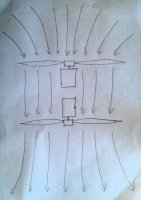Bartman
Welcome to MultiRotorForums.com!!
In another thread I'm building a coaxial quad and I'd like to have four 10X7 US std. rotation (CW) props on the bottom and four non-std 10X5 props on top so all motors on top would spin one way and the bottoms would all spin the other.
Is there any theory as to why one layout is better than another? I suppose they could alternate from arm to arm but can tops and bottoms be the way I've described?
Thanks,
Bart
Is there any theory as to why one layout is better than another? I suppose they could alternate from arm to arm but can tops and bottoms be the way I've described?
Thanks,
Bart

